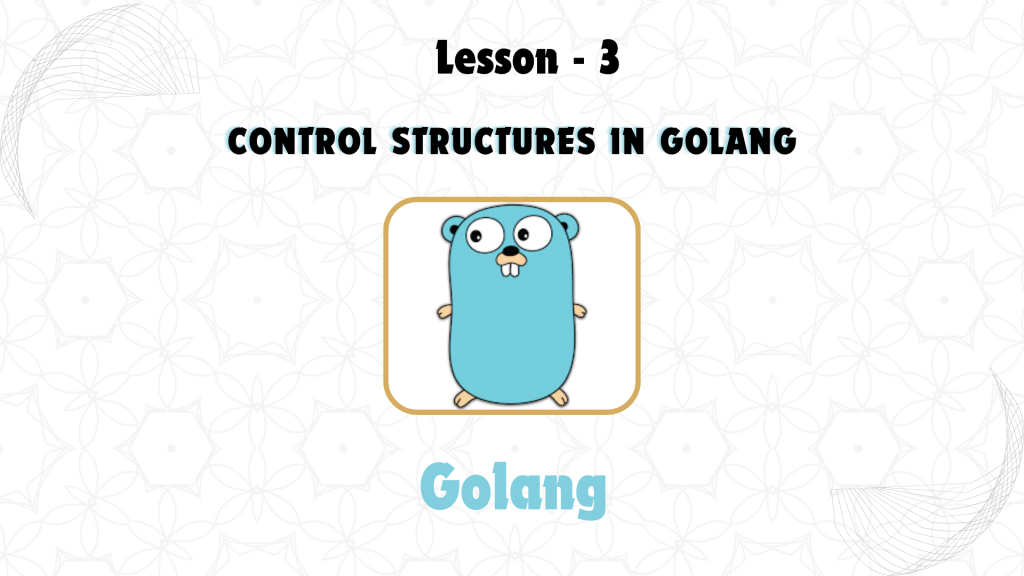
Control structures allow you to direct the flow of your program’s execution. GoLang provides a variety of control structures, including conditional statements, loops, and switch cases, which are crucial for writing logical, dynamic, and efficient code.
Syntax:
if condition {
// code to be executed if condition is true
} else {
// code to be executed if condition is false
}
Example:
package main
import "fmt"
func main() {
age := 18
if age >= 18 {
fmt.Println("You're eligible to vote!")
} else {
fmt.Println("You're not eligible to vote yet.")
}
}
Key Points:
- The condition inside
ifmust evaluate to a boolean (trueorfalse). - You can also use
else ifto check multiple conditions.
2. Loops in GoLang
GoLang has one main loop: the for loop. This powerful loop can be adapted to act like while, do-while, or infinite loops.
Basic for Loop Syntax:
for initialization; condition; post {
// code to execute
}
Example:
package main
import "fmt"
func main() {
for i := 0; i < 5; i++ {
fmt.Println("Iteration", i)
}
}
Range Loops:
range is used to iterate over elements in a collection (like arrays, slices, maps, etc.).
Example:
package main
import "fmt"
func main() {
nums := []int{2, 4, 6, 8}
for index, num := range nums {
fmt.Printf("Index %d: %d\n", index, num)
}
}
3. Switch Case in GoLang
switch in GoLang is a powerful and concise way to handle multiple conditions. Unlike other languages, Go’s switch doesn’t need to use break as it automatically exits after a match.
Syntax:
switch expression {
case value1:
// code for case 1
case value2:
// code for case 2
default:
// code if no match
}
Example:
package main
import "fmt"
func main() {
day := "Monday"
switch day {
case "Monday":
fmt.Println("Start of the work week!")
case "Friday":
fmt.Println("Almost the weekend!")
default:
fmt.Println("A regular day.")
}
}
Key Points:
switchcan be used with expressions, variables, and constants.- No need to use
breakexplicitly.
4. Break and Continue in Loops
Go provides the break and continue statements to control loop execution.
Break:
Exits the loop immediately.
Example:
package main
import "fmt"
func main() {
for i := 0; i < 10; i++ {
if i == 5 {
break
}
fmt.Println(i)
}
}
Continue:
Skips the remaining code in the current iteration and moves to the next iteration.
Example:
package main
import "fmt"
func main() {
for i := 0; i < 10; i++ {
if i%2 == 0 {
continue // Skip even numbers
}
fmt.Println(i)
}
}
Conclusion:
In this lesson, we explored some of the most important control structures in GoLang, such as if-else, for loops, switch cases, and control flow using break and continue. Mastering these will enable you to write more dynamic and flexible Go programs.
In the next lesson, we will delve into GoLang Functions, where you’ll learn how to create and use functions, pass parameters, return values, and more. Stay tuned!


